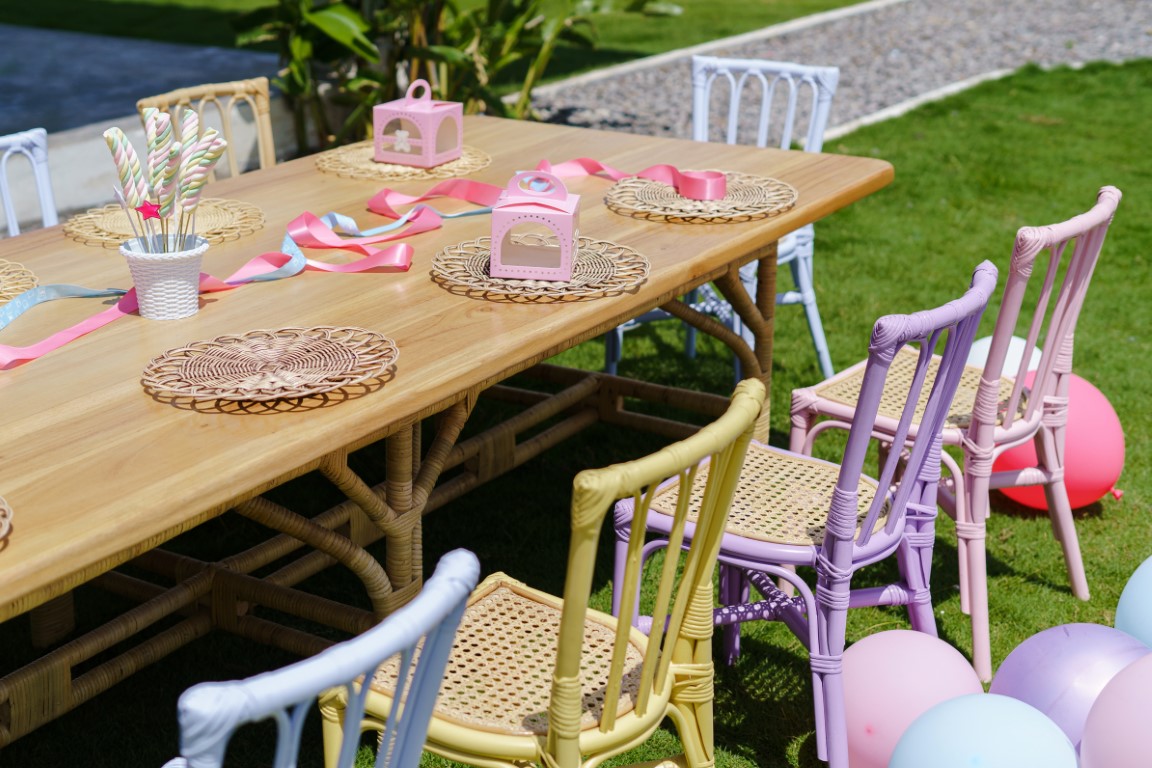Table of Contents
The kids furniture market is a dynamic and evolving sector within the broader furniture industry. It caters to the unique needs of children across various age groups—from toddlers to teenagers—while balancing aesthetics, safety, functionality, and ergonomics. As modern parenting continues to emphasize child development, creativity, and comfort, the demand for high-quality kids furniture has significantly risen. This market encompasses everything from cribs and bunk beds to study desks, wardrobes, and activity tables designed specifically with children in mind.
The global shift toward smaller family units and urban living has also influenced the design and functionality of kids furniture. Compact, modular, and multi-purpose furniture items are now gaining popularity, particularly in densely populated areas. This trend, along with the growing focus on child safety and eco-friendly production, has prompted manufacturers to innovate both in materials and design.
Evolution of Kids Furniture Through the Decades
Kids furniture has undergone a remarkable transformation over the past several decades. In the mid-20th century, children’s furniture was largely functional, minimalist, and often just a scaled-down version of adult furniture. However, the late 20th and early 21st centuries witnessed a major shift as brands began to recognize the importance of catering to a child’s emotional and psychological needs through thoughtful design.
Today, kids furniture is not only about utility—it is about expression, imagination, and contribution to learning environments. Ergonomic desks to improve posture, themed beds that encourage creativity, and storage solutions that promote independence are just a few examples of how the market has evolved.
Key Drivers of Growth in the Kids Furniture Market
Several factors are driving the sustained growth of the kids furniture market worldwide. One of the most significant contributors is the increase in disposable income among young families. With more financial flexibility, parents are willing to invest in durable, safe, and stylish furniture for their children.
Additionally, urbanization has led to the development of compact homes where space-saving furniture becomes essential. The growing awareness of child psychology and development also plays a critical role in shaping demand. Parents today are more informed about how the environment influences a child’s growth, making them more selective in choosing age-appropriate and stimulating furniture.
The expansion of the e-commerce sector further accelerates market growth by offering consumers access to a wide variety of styles and prices. Online platforms not only provide convenience but also facilitate easy comparison shopping, which appeals to digitally native parents.
Segmentation of the Kids Furniture Market
The kids furniture market is segmented based on various criteria, such as product type, age group, material used, distribution channel, and geography. In terms of product types, the market includes beds, cribs, dressers, desks, chairs, bookcases, wardrobes, and playroom furniture.
Age segmentation is crucial in this industry. Furniture designed for infants, toddlers, school-age children, and teenagers varies significantly in terms of design, safety requirements, and size. For example, cribs are designed for infants with strict safety standards, while teenage furniture often incorporates design elements inspired by youth culture and social trends.
Materials also define market segmentation. Wooden furniture, particularly from sustainable sources like FSC-certified wood, is highly preferred for its durability and eco-friendliness. However, plastic, metal, and engineered wood are also common due to their affordability and flexibility in design.
Geographical segmentation indicates different preferences and safety standards. For example, North America and Europe place a strong emphasis on eco-certification and safety compliance, whereas in regions like Asia-Pacific, price sensitivity plays a more prominent role.
Market Trends Shaping the Industry
One of the most noteworthy trends in the kids furniture market is the growing popularity of themed furniture. Designs that reflect cartoon characters, animals, fairy tales, or even sports themes can be found in bedrooms and play areas. This trend taps into a child’s imagination and makes furniture an active part of their daily storytelling and play.
Sustainability is another major trend. Eco-conscious parents are now prioritizing furniture that uses non-toxic finishes, recycled or FSC-certified wood, and production methods that reduce carbon footprints. Manufacturers who highlight their sustainability credentials are gaining a competitive edge in premium markets.
Moreover, modular and multifunctional furniture is on the rise. Items like loft beds with built-in desks or beds with integrated storage help maximize space in urban homes. This kind of furniture also appeals to minimalist and modern interior design preferences.
The integration of technology into kids furniture is an emerging trend. Desks with wireless charging stations, LED lighting, and even smart storage that teaches kids how to organize are slowly making their way into high-end furniture lines.

